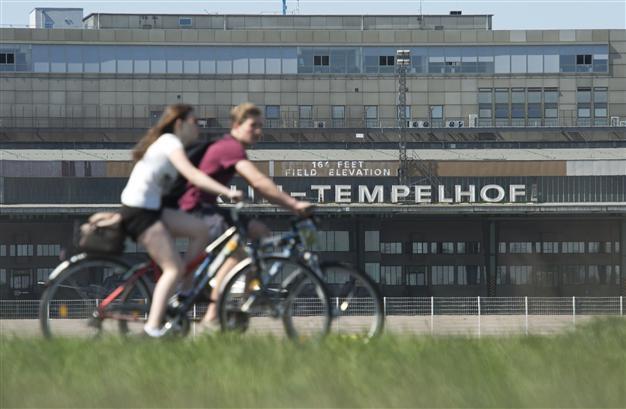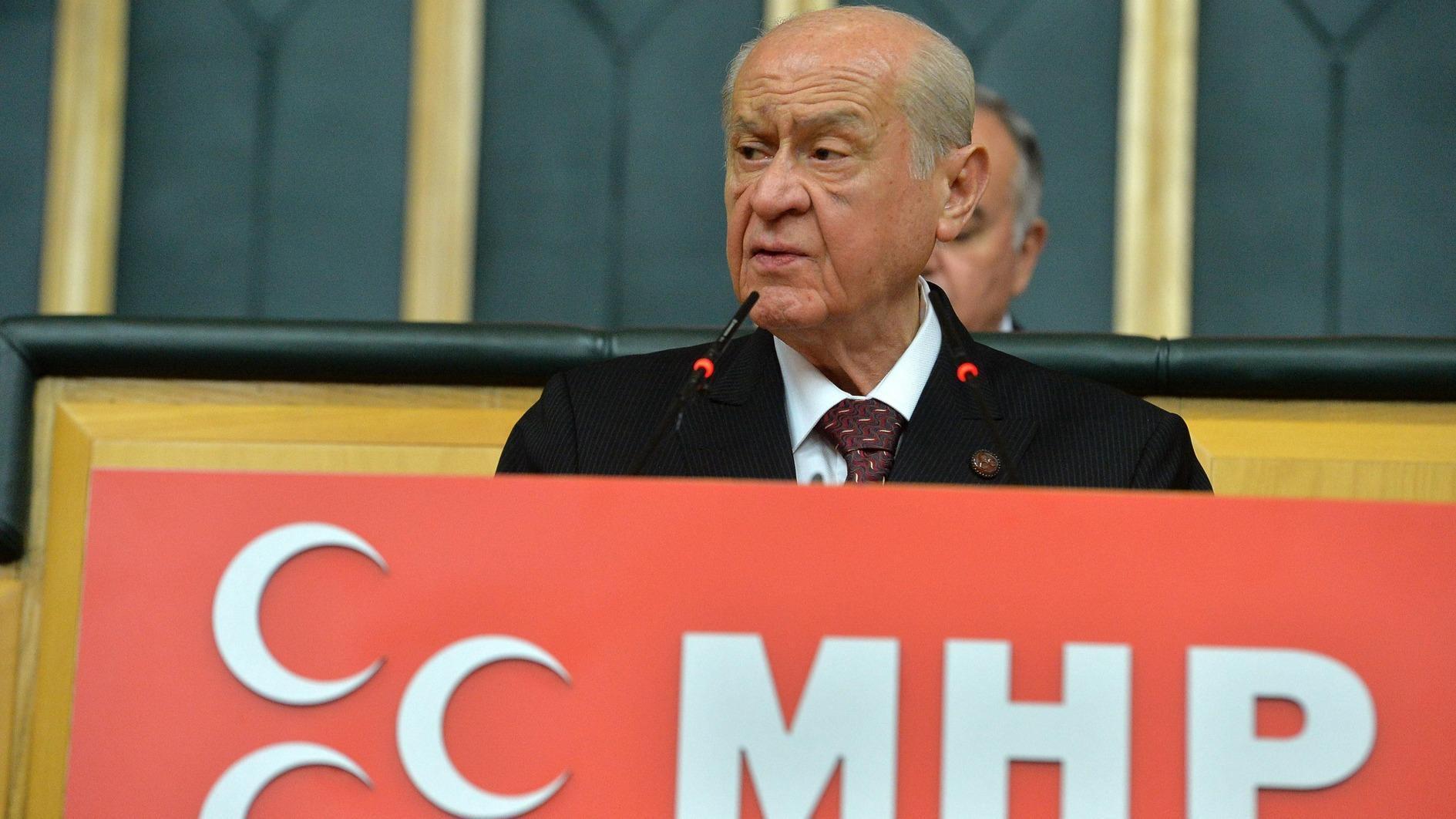Berliners to vote on future of airport-turned-playground
BERLIN - Agence France-Presse

People cycle past the main terminal of Tempelhof airport in Berlin on April 28, 2014. AFP Photo
Berlin's former Tempelhof Airport, a Cold War icon, has become its biggest green space, but a battle rages over its future, pitting developers against defenders of the city's slightly anarchic playground.On Sunday, when Europeans elect their new parliament, Berliners will also vote on a question that may be closer to their hearts -- the fate of the vast park, now a symbol of competing visions of the city.
Tempelhof sits right in the middle of the German capital of 3.4 million. At 300 hectares (750 acres), it is slightly smaller than New York's Central Park.
The site echoes Berlin's turbulent and troubled history. On its northwestern edge looms the huge semi-circular former airport terminal, typical of the Nazis' architectural gigantism, built between 1936 and 1941.
Early in the Cold War, Tempelhof became the hub for the Berlin Airlift, when Allied planes made some 277,000 landings here to supply the western part of the war-ravaged city with food and fuel during the 1948-49 Soviet blockade.
Opened as a park in 2010, Tempelhof became a temple of outdoor recreation. In summer the open sky is filled with kites, and people run, skate and cycle on the old runways, or simply sunbathe or enjoy a barbecue in the grass.
Communal organic vegetable patches and herb gardens have sprung up, alongside bicycle workshops and other oddball do-it-yourself ventures, one of the latest being a mini-golf course made from recycled objects.
Now the area is a flashpoint in a debate about the development of Berlin, which has long been popular for its relaxed and affordable lifestyle but, according to some, risks losing its soul amid a building boom and rising rents.
The city plan that so angers opponents would build some 4,700 apartments, homes and commercial spaces, as well as a large public library, sports fields and a lake, that between them would cover about 20 percent of the field.
A citizens' initiative called "100 percent Tempelhof Feld" sprang up in nearby neighbourhoods, its members fundamentally opposed to what they see as Berlin's rampant gentrification.
They collected more than 185,000 signatures, about 10,000 more than required, to launch Sunday's referendum.
"This development is not for the majority of Berliners, it's a project for investors," Kerstin Meyer, a board member of the protest group, told AFP.
Half of the buildings will be for businesses or priced out of reach of "two-thirds of the population of Berlin", charges the citizen's initiative.
On the other side of the debate, Gerhard Steindorf, director of the city's "Project Tempelhof" development, said the project aims to "preserve the diversity that characterises Berlin".
"All segments of the population must be able to live there," he said, with half the units to be rented out at affordable prices for middle-income families, rather than as luxury apartments.
In addition, he said, a green central core of "230 hectares must remain free in the middle, which is larger than the Tiergarten," Berlin's great park, west of the Brandenburg Gate.
He charged that the position of the citizens' initiative is "fantastical" and amounts to the dogma that "we should never touch it".
The Berlin city campaign's motto is "shaping the future -- no to stagnation" -- a line Meyer rejects, saying that "what is happening at Tempelhof ... is a real citizen-led movement".
The city government argues that it must cope with an expected influx of people to Berlin -- "250,000 to 285,000 by 2030," says Steindorf -- and ensure they are not pushed to the distant periphery of the sprawling city.
The save-Tempelhof initiative argues that first the citizens must reclaim their city and the park which Meyer calls "a very innovative place, a kind of commons, with a governance that organises itself".
Promoters and opponents of the Tempelhof development adamantly defend their respective points of view, but they agree on one thing -- that the outcome of the referendum is wide open.
Opponents were emboldened by a survey released Friday by the infratest dimap institute, which found 54 percent were against the property development versus 39 percent in favour.
















